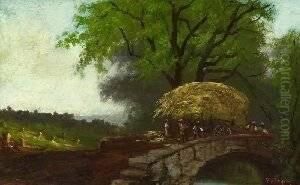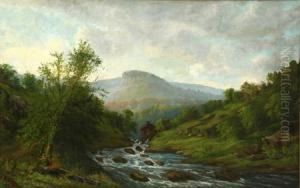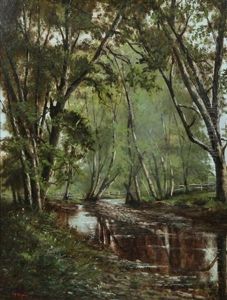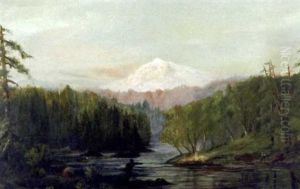Benjamin Franklin Tryon Paintings
Benjamin Franklin Tryon was an American painter, primarily known for his portraits and landscapes. He was born on July 26, 1839, in Northampton, Massachusetts. Tryon had a keen interest in art from an early age and pursued his passion for painting throughout his life, despite the lack of formal art education during his early years.
Tryon's artistic career was largely influenced by the Hudson River School, a mid-19th century American art movement embodied by a group of landscape painters who were inspired by romanticism. Although he was not directly associated with the school, the movement's focus on naturalism and the grandeur of the American landscape can be seen in his works.
During the American Civil War, Tryon served in the Union Army, and his experiences during this time also influenced his artistic style and subject matter. After the war, he traveled to Europe, as many American artists did, to further his art education. He studied in Düsseldorf, Germany, which was a popular destination for American artists seeking academic training in the fine arts.
Throughout his career, Tryon exhibited his work at various venues, including the National Academy of Design in New York. His paintings were well-received, and he gained a reputation for his ability to capture both the likeness of his portrait subjects and the atmospheric qualities of his landscapes.
Benjamin Franklin Tryon continued to paint and contribute to the American art scene until his later years. He passed away on September 3, 1920, in Pasadena, California. His works remain a testament to his skill and dedication to the art of painting, and they can be found in private collections and occasionally appear in auctions and exhibitions dedicated to 19th-century American art.



